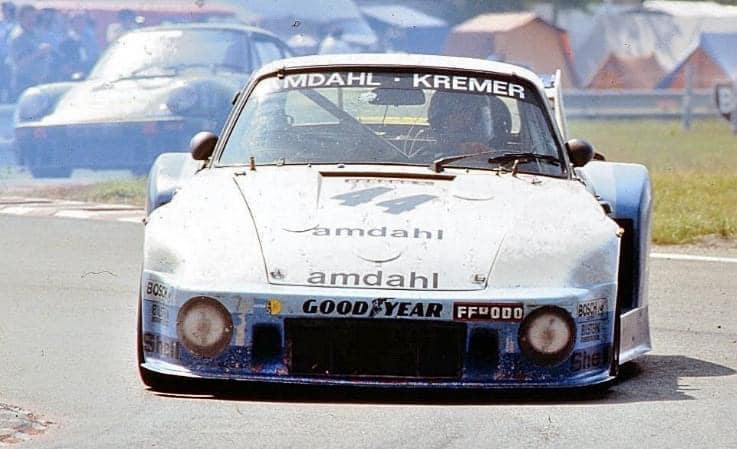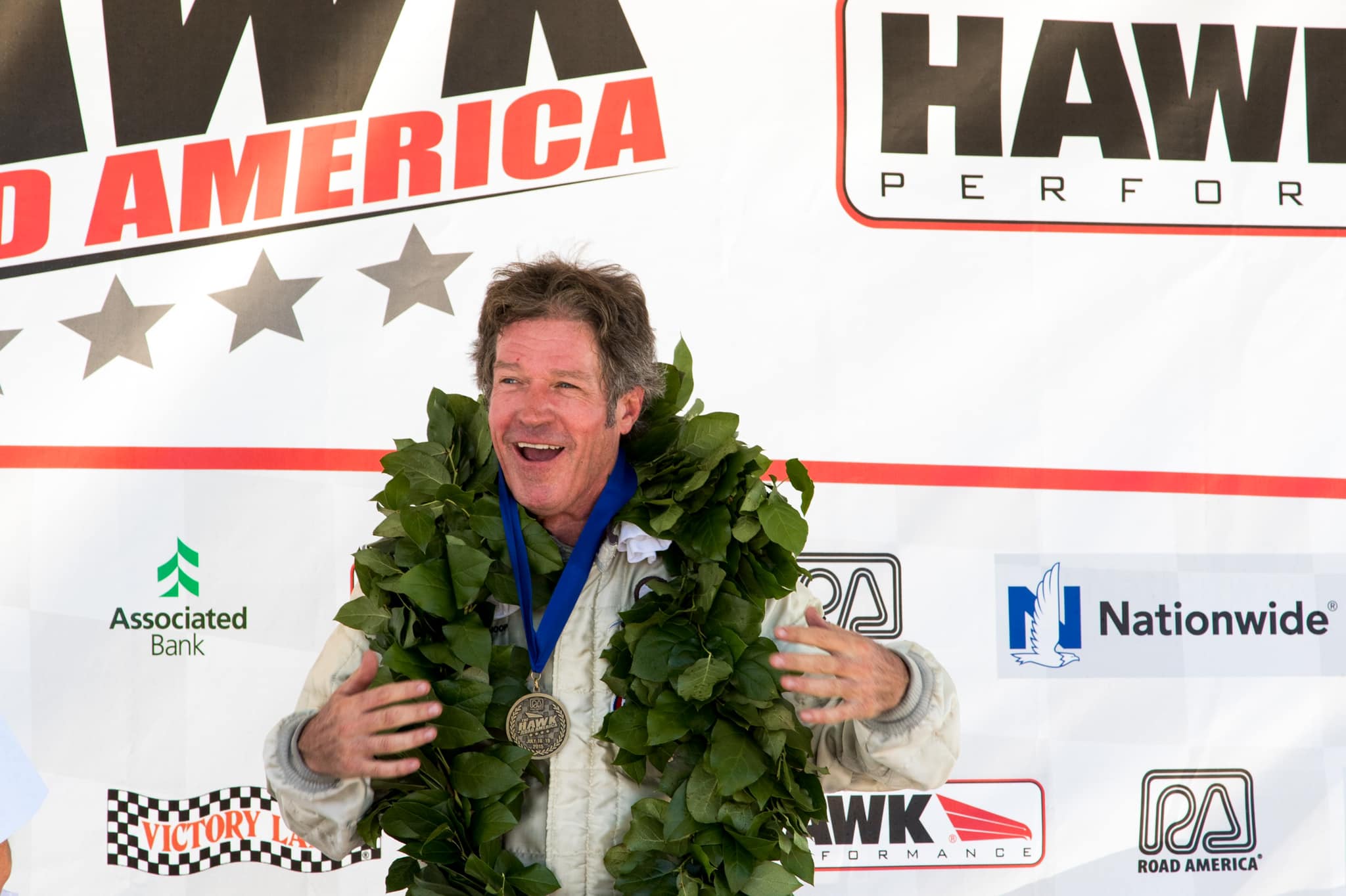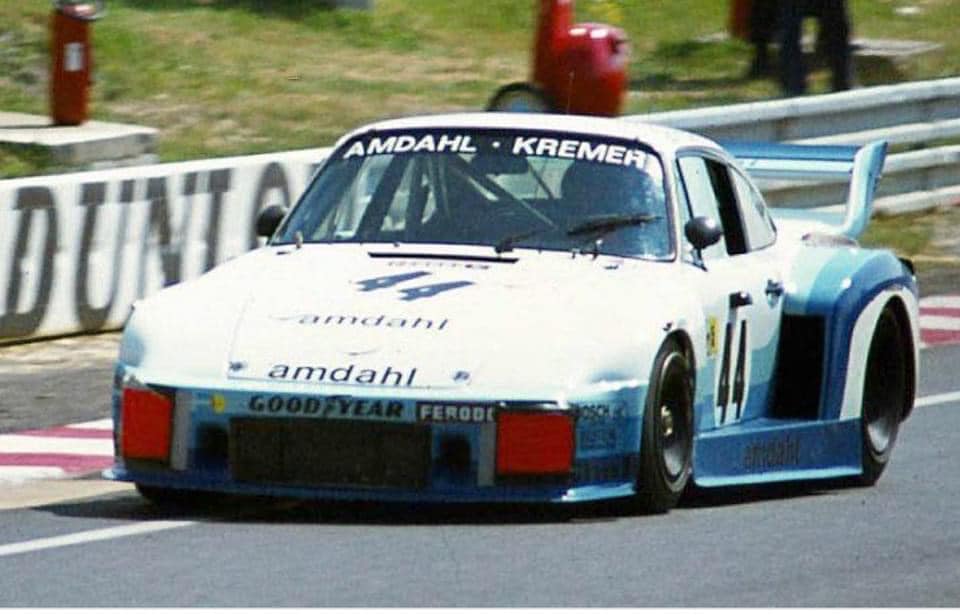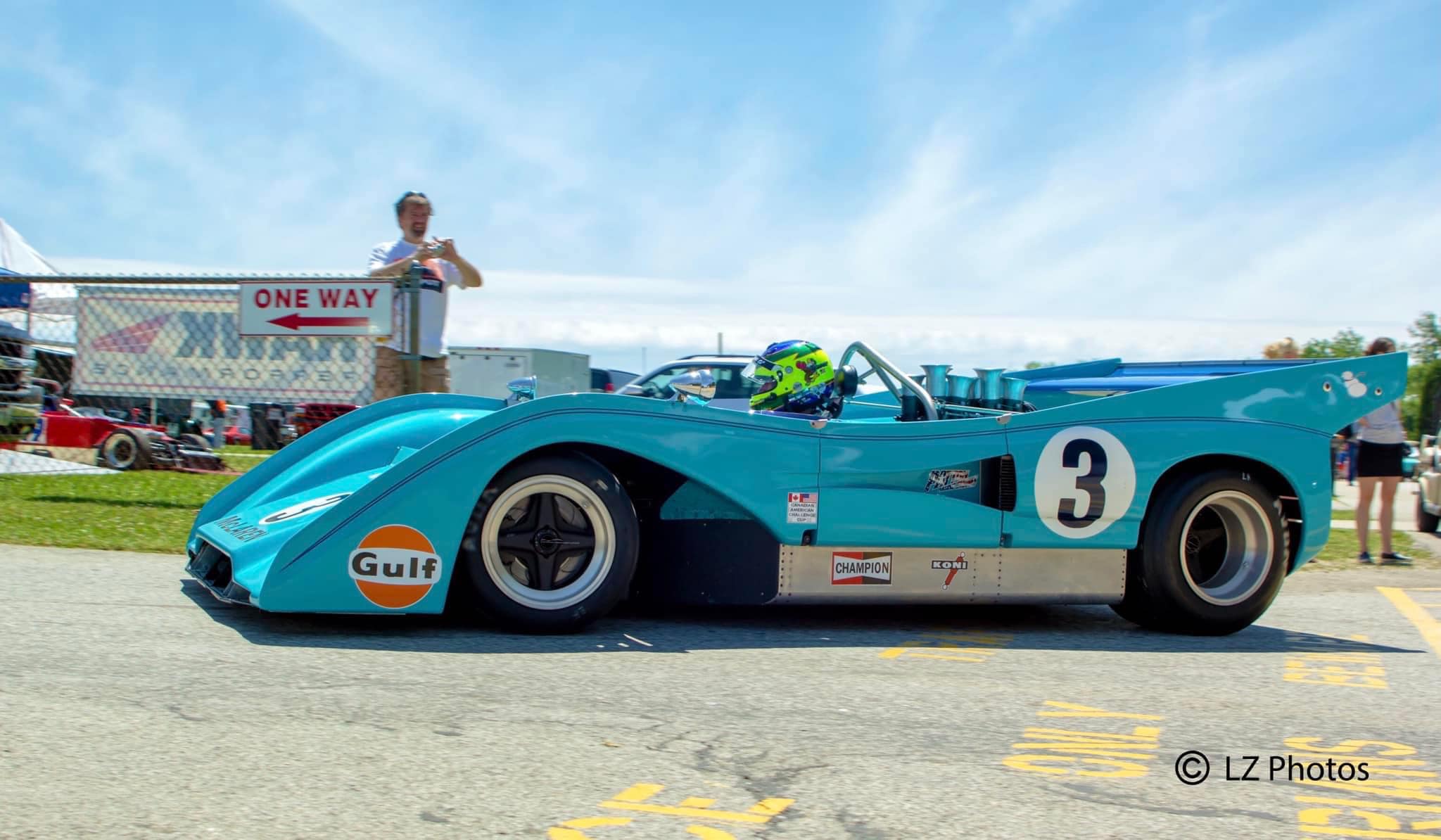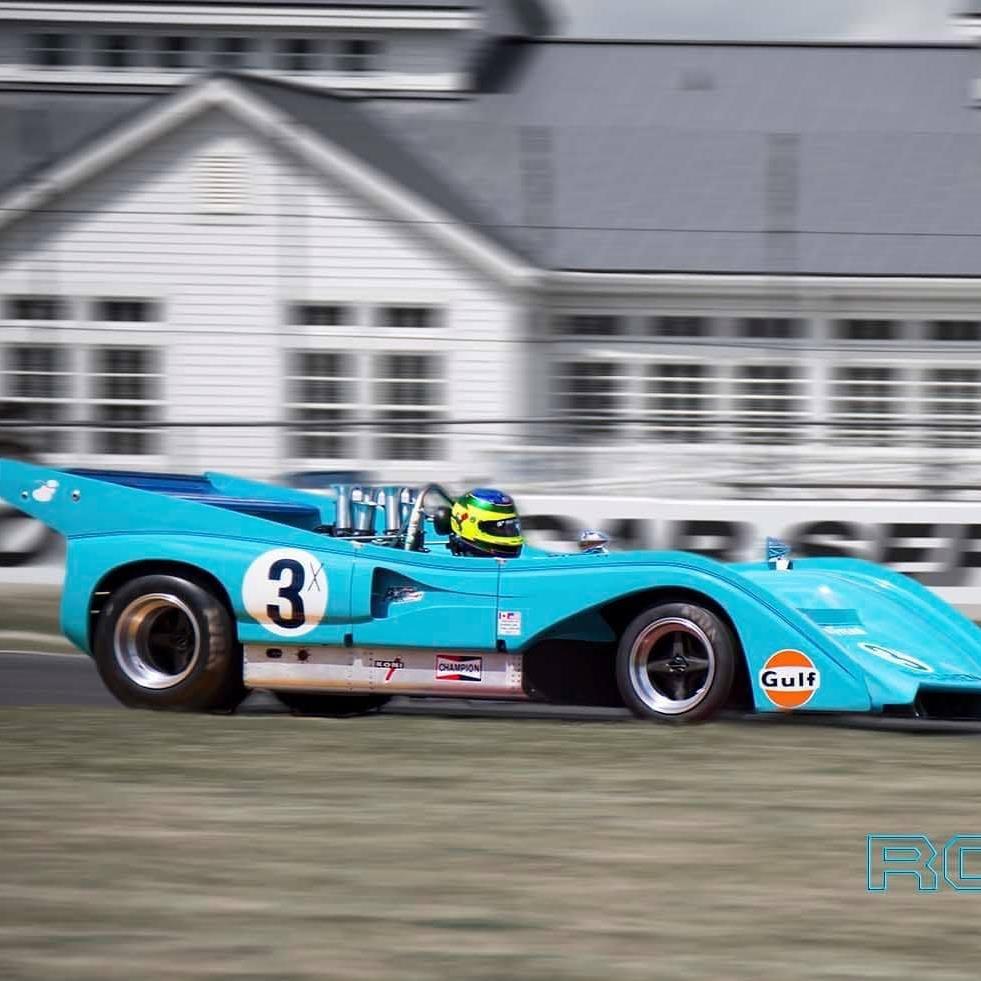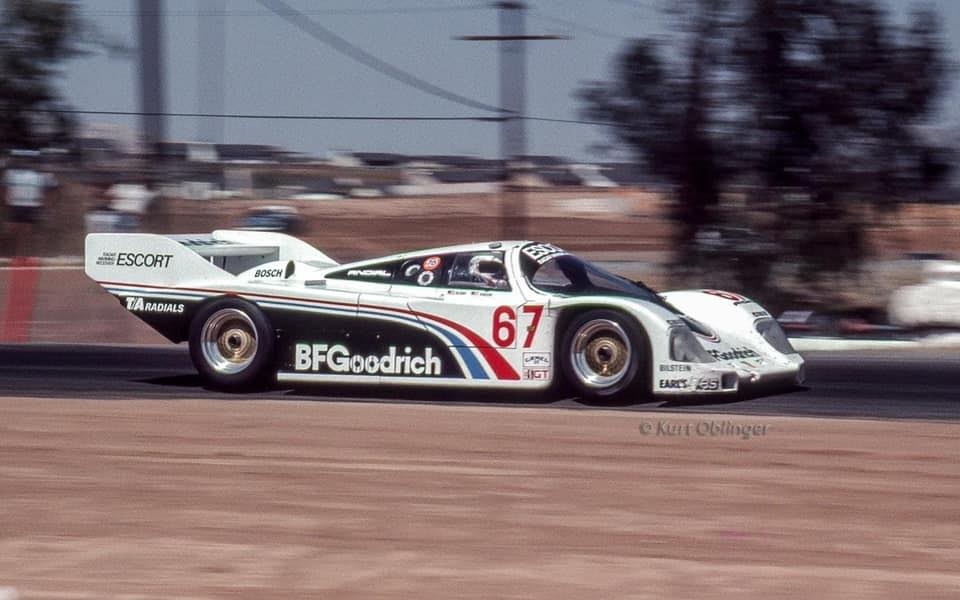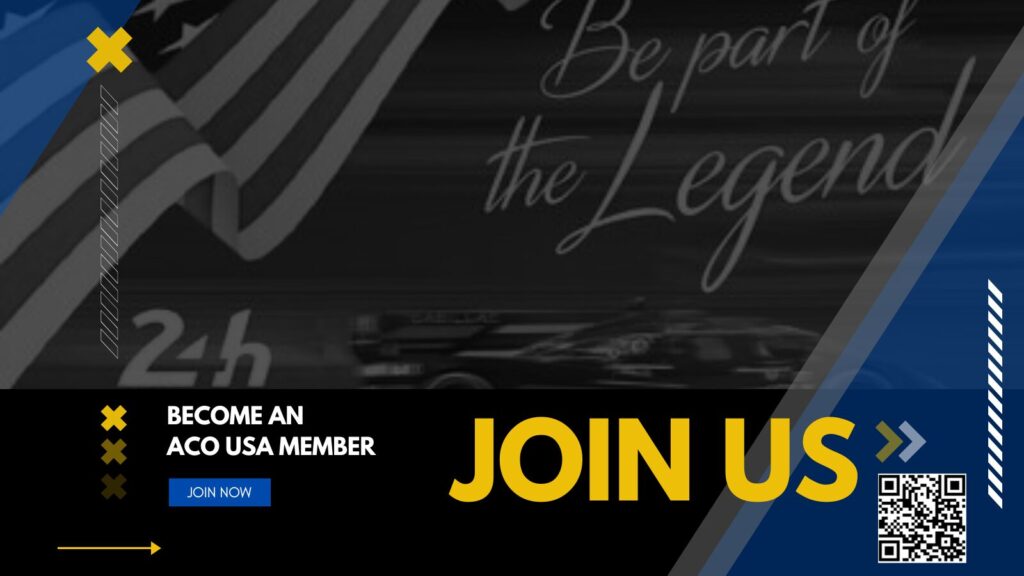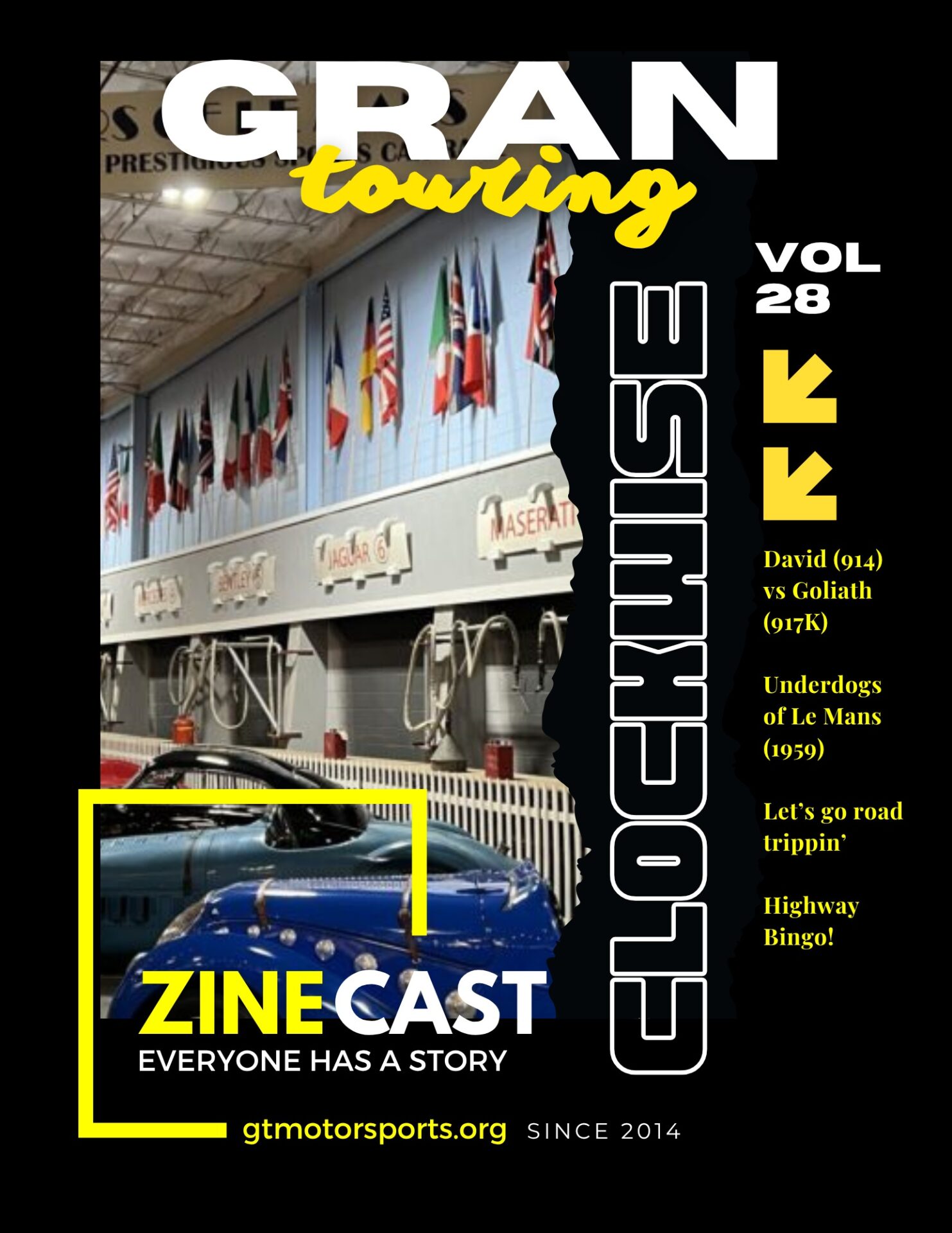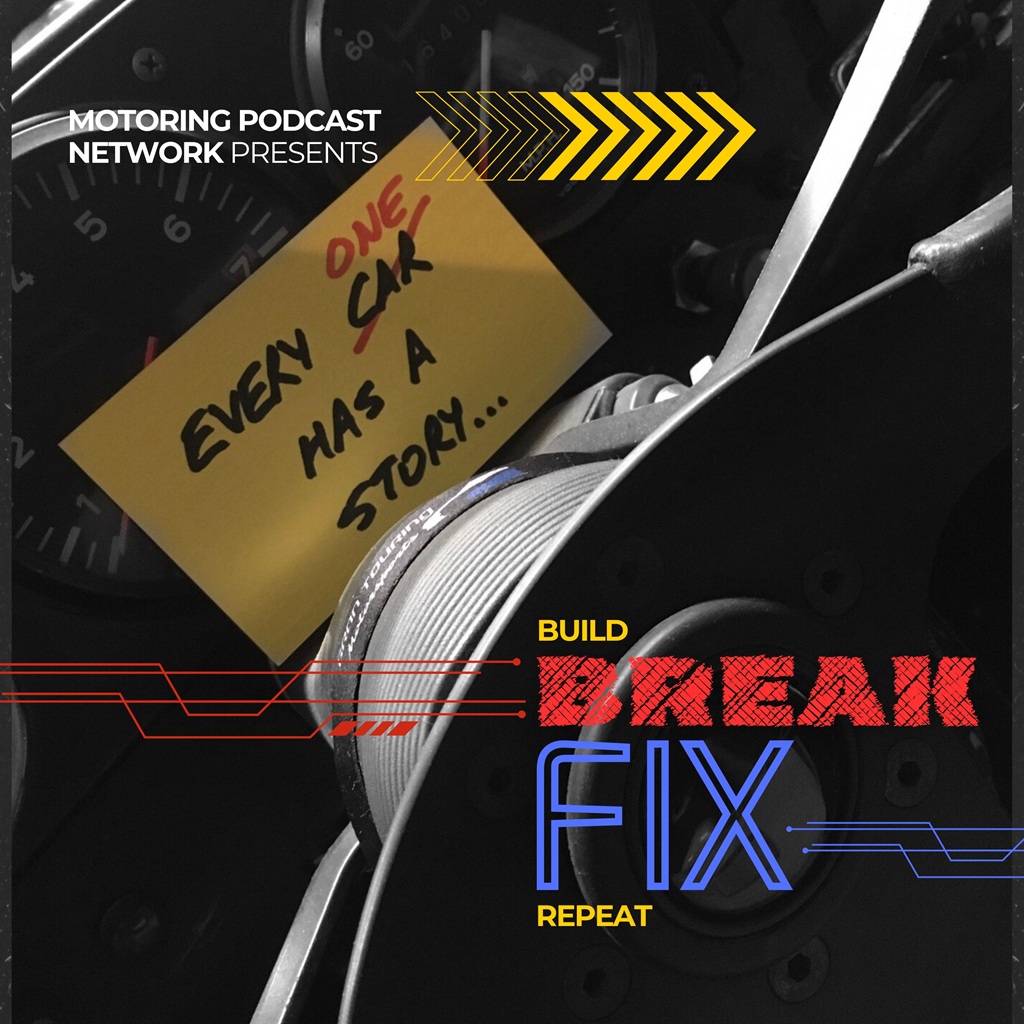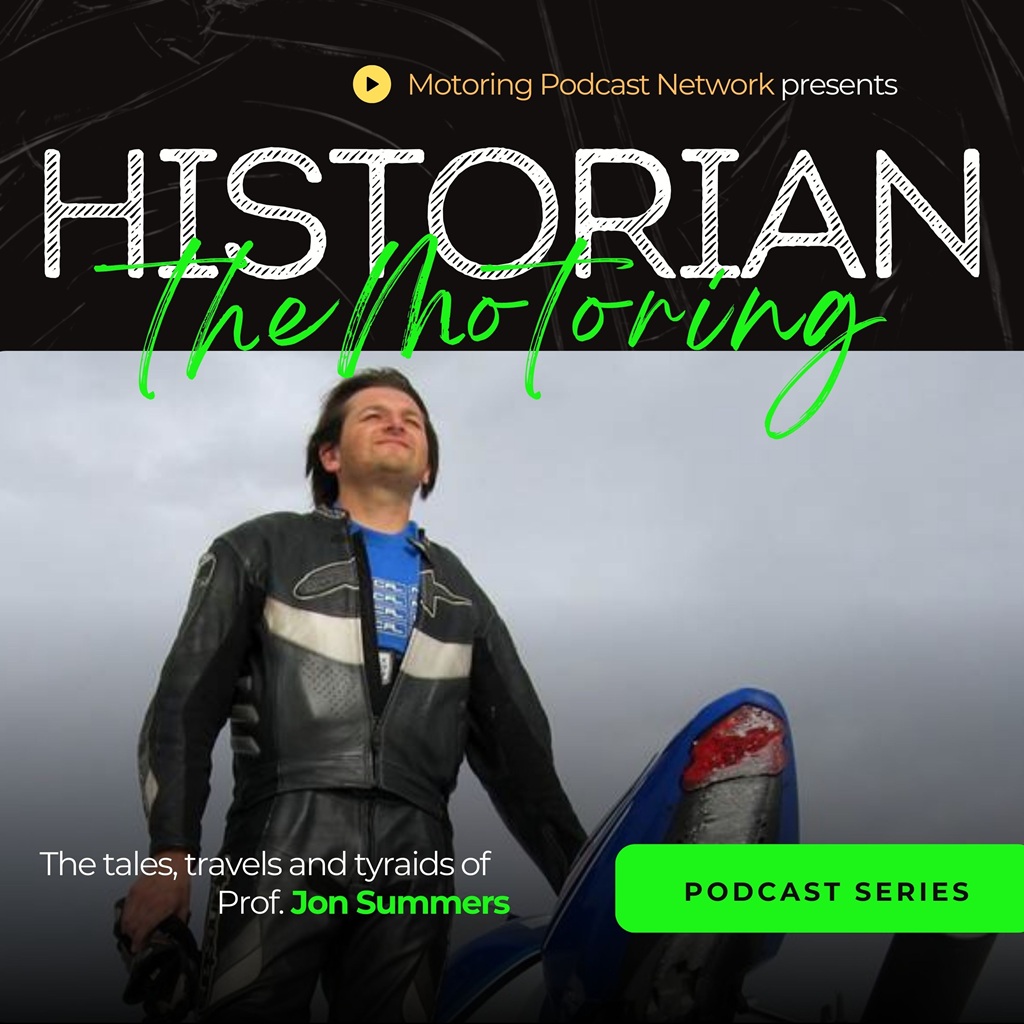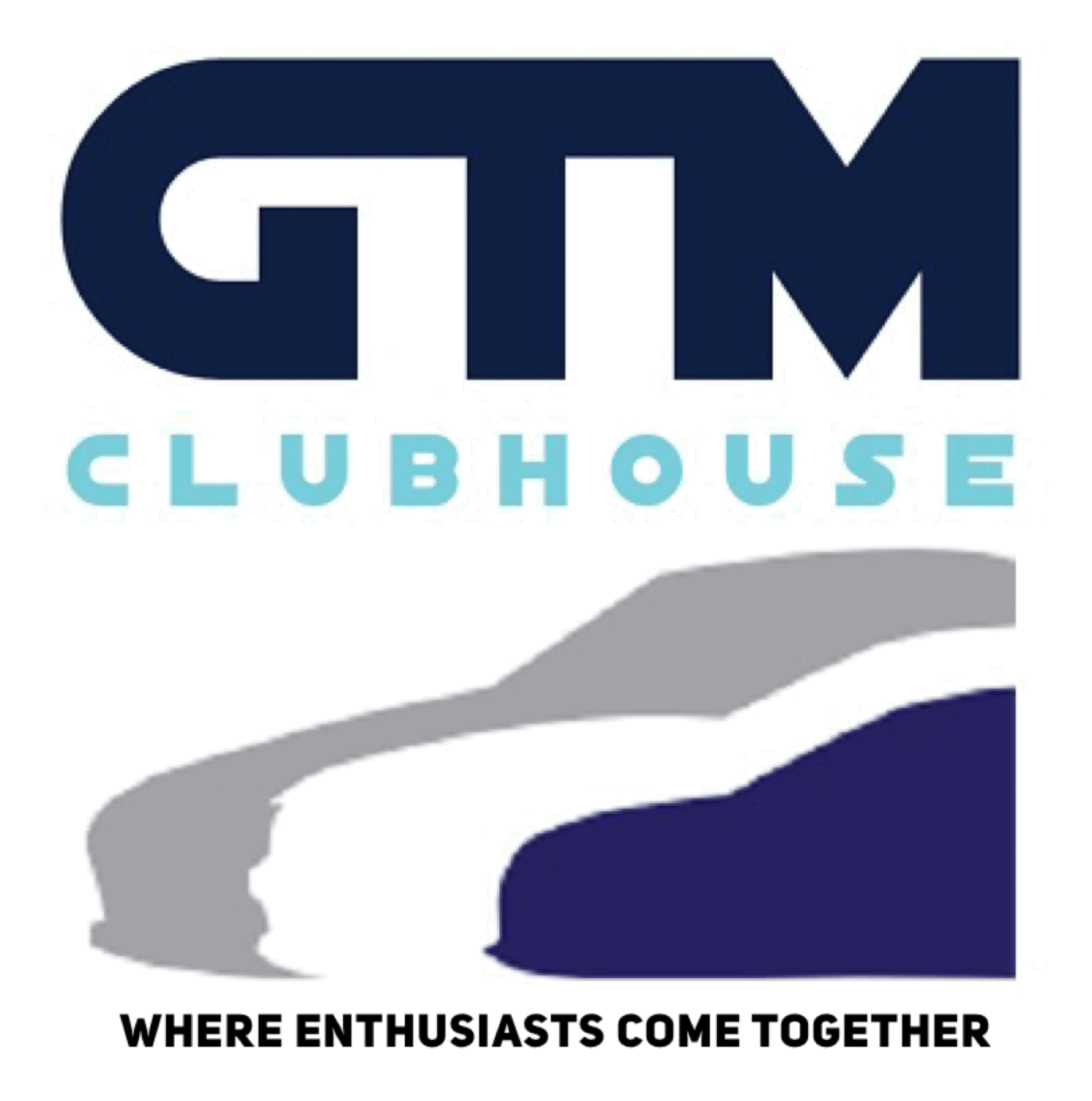Rick Knoop’s first professional wins came in 1979 in IMSA Goodrich Radial Challenge 6-hour at Talladega in an AMC Concord, followed by GTU win at Road America in a Mazda RX-7. Won a Camel GTU class race at Pocono in 1981.
First major win was 1983 Rolex 24 at Daytona’s GTO class in Mazda RX-7. Also that year won GTO class at Mosport. Won Group C2 class in 1984 24 Hours of Le Mans with Jim Busby in a Lola T-616, then won The Longest Day at Nelson Ledges in a Porsche with Busby and Fred Baker. Also drove selected Winston Cup races in 1981 and 1987.
Since then has been frequent competitor in Historic Stock Car Series, plus Vintage and Historic races.
Tune in everywhere you stream, download or listen!
 |  |  |
- Spotlight
- Notes
- Transcript
- Highlights
- Learn More
Spotlight
Rick Knoop - Legend Liason for ACO USA
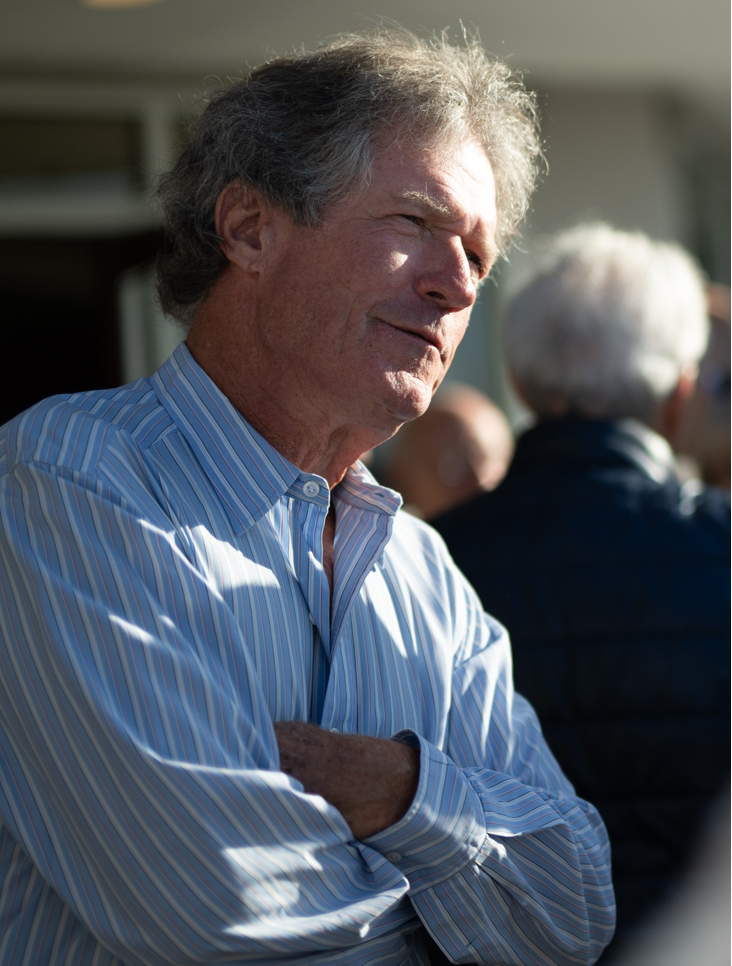
American Professional Road Racing Driver and Instructor. Factory Porsche, Ferrari, BMW, MazdaT oyota. Daytona ,Le Mans, Pikes Peak winner. IMSA, CanAm, NASCAR, Sprint Cars

Contact: Rick Knoop at Visit Online!![]()
![]()
![]()
Notes
- Rick, you also come from humble beginnings, what was your road to Le Mans like?
- Rick – you’ve got Mazda, Porsche and Lola’s among others in your background, what were they like to drive?
- What do you feel is the most challenging part of driving at the 24 hours of LeMans?
- What’s the biggest (or most important) take away from Le Mans?
- If someone asks you today, “Why should I go to (or watch) the 24?” What would you say?
- You’ve seen a lot of change in the last 40 years; what are some of the best “new” things to have come to LeMans since you started there?
and much, much more!
Transcript
Crew Chief Brad: [00:00:00] Evening with the Legend is a series of presentations exclusive to Legends of the Famous 24 Hours of Le Mans, giving us an opportunity to bring a piece of Le Mans to you. By sharing stories and highlights of the big event, you get a chance to become part of the Legend of Le Mans, with guests from different eras of over 100 years of racing.
So
Crew Chief Eric: Rick Knoop’s driving record at le mans is a testament to his enduring skill and dedication to the sport of endurance racing Throughout his career, Rick has participated in multiple auditions of the prestigious 24 Hours, showcasing his prowess behind the wheel on one of motorsports most demanding stages.
His driving performances have often been marked by a combination of speed, consistency, and adaptability as he navigated the challenges posed by the track alongside of [00:01:00] some of the world’s finest drivers. And with that, I’m your host, Crew Chief Eric from the Motoring Podcast Network, welcoming everyone to this evening with a legend.
Rick, welcome to the show.
Rick Knoop: Thank you.
Crew Chief Eric: Every legend has an origin story, so let’s start with yours. Rick, you come from humble beginnings. What was your road to Le Mans like?
Rick Knoop: Well, it was interesting. My father taught me how to drive when I was about eight years old in a parking lot in a little Volkswagen Beetle.
That summer, I was driving pickup trucks at the ranch, sitting on a pillow and propping myself up. As I was getting older, my job in the springtime was to start all the equipment up. The D4 Caterpillar, the water wagon, the loader, hauling hay and, and that. I’ve driven a lot of different utility cars. I got my driver’s license.
My first car, and it sounds grandiose, was a Porsche. I bought a 64 SC, which was the last, as you know, the 356s. But it was [00:02:00] 2, 200 back then, which was a lot of money. Fast forward, I went to college and I had a BMW 2002 TII. My first time on the racetrack was 1974 and I did a hill climb at Willow Springs International Raceway.
Little did I know that I’d be teaching there and became one of the foremost test tracks for me in my affiliation with Jim Busby. Then I ran an Alfa Romeo in 1977. I got my regional license. I was fortunate enough to win the B sedan regional. The next year I went right into pro racing, driving an RSR, which was 1978.
Jim Busby racing was preparing the car. Lo and behold, I meet Jim Busby and 48 years later, he’s a dear friend of mine. And. We went to Daytona, to Le Mans, to Monza, to the Nürburgring, Watkins, all the major tracks.
Crew Chief Eric: How did you get to Le Mans?
Rick Knoop: 1978 was my first year, 24 years [00:03:00] old. I had finished six overall with Bob Aiken and Steve Earle.
Steve Earle, you might know as being the moderator of historic car races. We figured if we were vintage racing, we could probably keep a car alive at the Pepsi Rolex 24 hour. We finished six overall. We went to the mobile one, 12 hours of Sebring. Then we were fifth overall. Now I’ve got WEC points and Jim Busby had watched over the shoulder and said, this guy new is consistent and I won’t speak for him, but said, you know, he brings these cars home.
And I think being smooth, consistent, and concentration in the background of driving various cars, trucks, and private’s license and all, I have eye to hand coordination. Now, Busby says to me, would you like to go to Le Mans? And I think I was third in the world championship. I was 24 and I said, go to Le Mans.
How does that work? He said, well, Manfred and Erwin Kramer are going to do three cars. We’d like one car to have American [00:04:00] drivers. There was two other drivers that were willing to buy a ride type format. I guess Buzz really wasn’t too keen on them. So he said, Rick, you have anybody that might be able to help in this?
And I said, Chris Cord. Chris and I had been, uh, running at Steve Earle’s events and he’d been driving a 365 Daytona with John Morton, Milt Mentor. Lo and behold, Manfred and Erwin Kramer said, that’s a good idea, we just don’t know about this new, has he ever driven a turbo? That’s sort of how it came to happen and the next thing I knew, we were an all American team.
All from California, driving for a company in Cologne, Germany called Kramer Racing. And we had a fantastic run there.
Crew Chief Eric: So when you look at your entrance into Le Mans, you’re actually coming in at about the midpoint. It had already been about 50 years old, celebrating that anniversary. Was that your first European race?
And if so, what was it [00:05:00] like when you got there? How did it compare to racing in the United States? What kind of emotions were you going through turning your first qualifying laps at Lamont?
Rick Knoop: Well, I’d been to Europe a couple of times. My mother was nice enough to get us a little bit of a, on a sightseeing, but first time you’re very correct was racing in my wildest dreams, the nine seventies, the John wire cars, the Porsches, the GT forties.
I was a big fan of. Really had a lot of respect. I knew I’d really have to ante up to my game. I had to have the integrity, had to earn the trust to be responsible. And we went out there and I had a lot on my shoulders. I guess you could say it’s a natural ability I was born with. And that is to swing a backhoe correctly and to load and unload.
And I had a hand. And when I was asked to get into the car for the first time, And Eric, as you know, this is pre chicane, so the Mulsanne is approximately just a little short of four miles. Before I got [00:06:00] into the car, Manfred Erwin Kramer asked Busby, uh, has Newt ever driven a turbo? Busby says, has he ever driven a turbo?
That was the answer. So that wasn’t yes or no. And I’d never have, but I’d been driving some McLaren, some big, big, fast cars at Monterey at Steve Earl’s been driving those since 1975. I still to this day, drive them. So the shock wave or the power to wait, wasn’t going to just say, Oh crap. The spooling up of the, not one, but two turbos, all that sound almost like indigestion and the marvelous flames on the overrun.
And I got to tell you my first lap there, just trying to be smooth. And I was earning a reputation, anything I left, I’d get the equipment back to the barn, the vintage races. I would go out there and gradually start rolling the volume on in terms of its potential. I love to explore, but I don’t get crazy.
I do a little bit of sprint car stuff. I just have a knack, [00:07:00] I guess, and this isn’t a self assessment, but I love going in and explore a little bit, a little bit more. And most of the time, at the end of the day, I do a pretty darn good job for never been to the track before, and that’s indeed what happened at Le Mans.
But the first time going down that Mulsanne, and we didn’t have simulators then, we had to rent a car the week before, and I just started to hear the whistle, and both of them starting to feed me and going back under the accelerator. Four speed, aluminum cage. open face helmet and you knew that if something was to happen, it probably wasn’t going to be good.
But gosh darn it, with the two drivers, Jim Busby, who really said you can do this, but the butterflies were real.
Crew Chief Eric: And what’s funny about that is if anybody’s ever gotten the opportunity to drive an original 930 turbo, which I have, you feel like you’re getting hit in the chest. It’s incredible the amount of power that those cars could put down with a single turbo.
So I can’t imagine what it’s like behind the wheel of a [00:08:00] 935. I’ve also heard that the 935s can be visceral and vicious at the same time. So what was the biggest learning moment with those cars at Le Mans?
Rick Knoop: That’s a great way to describe it. When the 930s came out, you’d count to three and then they’d get with it.
It’s called lag. The twin turbos, it takes a bit, it’s half sprint car, it’s a very physical car to drive, and I’ve driven NASCAR as well, I, I almost exaggerate my steering wheel way up front, because when you start getting spirited in them, and mind you, bringing it back and exploring, you know there’s a whole chapter of this book on what this car will do, but you better learn to dance with not only Integrity don’t put it through the fence.
You’ll lose all your momentum. So I explored very carefully. And then we started to rotate it. But you got to be careful tire management. This is a track with a 4 mile straight away. And my God, I came into the pits after the 1st session. My father said [00:09:00] I looked up to him because he was standing up and my eyes were the size of a plate.
And he said, Rick, let’s go for a walk. It’s the most amazing feeling. I knew I could do it, but I had no idea. The reflective signs saying that where the track, where the kink is, they had a way of illuminating a track that I had not seen at Daytona. But mind you, I’d only been to Daytona for the first time.
I went to Sebring for the first time. Now, baby, we’re at Le Mans. Even in 1978, they had a way of really guiding you through that black forest. Because as you know, a small part of Le Mans is actually a racetrack. You’re flying through a countryside. No, you try not to fly, but you know what I’m saying, you’re just zooming.
Crew Chief Eric: One of the things I’ve heard about Lamar is one of the toughest times to drive isn’t necessarily at night. It’s when the sun is coming up, you know, on those dawn hours, but also the weather is super random at Lamar. It could be raining on one side and not on the other. There’s other tracks in the United States are like that too.
Watkins Glen, which you’re familiar with, is like, that could be [00:10:00] raining in the boot and sunny on the other side. What did you find to be challenging or not so much compared to some of your competitors? Did you have an advantage at night or in the rain or anything like that?
Rick Knoop: You’re very accurate in saying one place I’ll tell you is spa.
It has a whole different weather system as well. Watkins Glen, what we were talking about earlier, has the kind of topography that the water actually drains. Mid Ohio, it puddles. Lime Rock, it puddles. The biggest plus in all that, I’m not trying to be negative, there’s a lot of variables here, but the one thing that is neat, there’s so many neat things about Le Mans, and Busby told me this, Le Mans isn’t a race, it is And boy, if that doesn’t get you before you go out and you know, you’ve got a world audience, but what I’m getting at is the one plus is that the nighttime, as you know, is shorter, it gets dark at about 11, because that place at nighttime when you’re a freshman, like I was, and I saw some things [00:11:00] that weren’t too pretty there in terms of cars getting air.
The consistency, which I’m noted for, and my concentration was at an all time high because we get into wake turbulence there. We get into the overruns of the Renault that won that year. Once you get out of the throttle, it’s like a flamethrower, and you can almost use that to your advantage. I’ve driven with the Angaisses, the Foytes, all those guys, and we used to giggle at the end of just loading that turbo up, you get out of it hard.
And you have a flamethrower, very much so at Le Mans. Your eyes have to readjust from your pupils going large and small. And the rain there, you’ve got to be very mindful. That’s a big word in my life. You don’t want to come home on the hook, but you want to keep exploring, but have a baseline to keep the consistency going.
And God, you can’t believe how many people are there. Jesus. I mean, they’re everywhere. They’re camping the Peugeot Club, the Maserati, the Fiat [00:12:00] Topolinos. I mean, it is just a complete woodstock with cars going over 200 miles an hour. I mean, it’s something else.
Crew Chief Eric: So let’s switch gears and talk a little bit about competition and in some respects, rivalries, because that’s an important part of racing, right?
We’re not out there just turning laps. We’re trying to win. And at Lamar, as we know, it’s a multi class situation. And so people are trying to win their class. They’re trying to win overall. There’s a lot of. Traffic out there and things like that. But when you went there the first time in the late seventies and into the early eighties, the nine 35 was an extremely popular car.
I think we can rattle off other names that drove nine 35s, whether it’s Garrison, Ray Hall, Redmond, and so on down the line, what was it like being out there with the other nine 35s? And did you have any rivals on the track?
Rick Knoop: Oh, yeah. And I’m glad you brought that up. It was almost an Iraq series with nine 35s.
Dick Barber racing had three cars, Paul Newman, Brian Redmond. You got a squadron of all of these nine 35s. You got the nine [00:13:00] 35 Moby Dick with Jochen Moss and Jackie X. So that was basically the prototype version. Of course, the index set performance or power to weight was very, very similar in the nine 35s.
And Porsche’s always had a gaggle or a squadron of cars out. So in order to run in the top 10%, you know, you’re crossing your T’s, you’re dotting your eyes. You’re being quiet and you’re just trying to be a blue angel on the asphalt. You have to keep your formation with military discipline. You have to keep your smoothness like your water skiing.
And you just are very aware. Now, Judy Stropas, before we had transponders, I was always so honored that I was on teams that Judy was on because she came from where. Roger Penske and Mark Donahue. So I knew that these teams that I was so honored to be a part of departmentally, we had a Rover that would Jack the cars up in the list and that, but in the specific fields, we had the other nine 30 flies.
That’s a brilliant point because it was like an Iraq. [00:14:00] Like I said, all the cars. Power to weight were the same, but you want to take a little wing out of it because it’s a four mile straightaway, Rick. And that’s how Jim Busby and I have worked with race cars. We look at the straightaway first, not only for gearing, but should we take some wing out and make it cleaner?
Well, you know, what’s going to happen. It gets looser, less. The grip comes on at 170 on. So there’s some variables there, world audience, and what an honor to be selected all California team running for Cologne, Germany, the Kramers. And you’re darn right. We had categories group five that year and group six and the group six cars.
And I think we qualified at Jim Busby at a 209. Okay. So we ran some boost up. I’m going to give you an accurate number. I’d say we were going 193 to 195, not one lap, every lap. And we get into vibrating the steering wheel and holy cow, and then you look in the rearview mirror and you see boom, boom, the [00:15:00] blinking of the lights, and it’s a 936 going by.
And you look at it going by. And it’s a crown road and you say, I wonder if my body work is kind of, it was like a piece of binder paper, not dangerous, mind you, and not like an accordion, but it has some wiggle room in it and you’re going, man, god, this isn’t doing solo one in a parking lot. We’re doing the real deal here.
Crew Chief Eric: Warren also writes, who was the toughest guy to pass among the various 935 drivers we talked about earlier?
Rick Knoop: Oh, yak and moss for sure. Hell of a driver. And I’ll tell you another guy that was just absolutely unreal and it tore my heart out was Stephan Beloff. Sheer speed, but he ended up getting killed.
When I had earned the right to get into the GTP prototypes with the tunnels and everything, in the 956s in Europe that Beloff was killed in, and then the 962s. I raced with Beloff prior to his accident, but y’all can Moss. There’s no not nonsense. AJ Foy doesn’t have a lot of [00:16:00] patients and there’s a little bit of I’m AJ and that’s okay.
But you know, I learned to know if we’re going to bring the goods home. Just get over it. Count to five, even though you’re going 190. Let them have the track, because gosh darn it, any entitlement in endurance racing normally doesn’t bring you, you know, a trophy. You have to really cool it. You don’t drive like you’re in a parade by any means, but you drive with absolute 100 percent focus, concentration, and smoothness.
Crew Chief Eric: So let’s do a little myth busting here. Since you’re talking about modifying your 935s, were you one of the fortunate teams that had one of these experimental limited slip differentials? I’ve heard these wives tales about pit crews that would push the 935s through the paddock through scrutineering and scrub their feet on the ground.
So it sounded like there was a locker in there and not an LSD. So were you fortunate to have this new technology?
Rick Knoop: Oh my God, if it happened, I would hope to hell it had a limited slip. I boy, that way you describe that is classic because you can’t [00:17:00] push those through the garage area and the tennis shoes chirping.
I honestly can’t answer that for you. Now, as the years came on and I drove other nine 35s, they were full lockers. That’s why you really commit yourself in those. If you start losing track after, you know, you’re tracking in. Apex and middle and whack it. And if you don’t get it to rotate, you’re going right through the fence.
So I can’t answer what we had at Lamar, but I have to tell you it was enough for me. I like that word exploring don’t crash, but explore a little bit. And then after a while, you are going faster with more rhythm, more consistency. It’s like a water slide. And a lot of the students I have, it’s water skiing on the pavement.
And it’s a beautiful thing to watch. And you watch this enough in slow motion, a car at Lamar or any track that’s got speed, the cars are actually drifting unless you’re on the banking with force grip at Daytona. But the rest of the time, if you’ve got the car set up pretty well, it’s [00:18:00] pretty neat entire management and all that.
But that’s a long answer. But I’ll tell you what, there was a lot of nine thirty fives and I was proud to win the group five.
Crew Chief Eric: As you mentioned, you’ve driven a lot of cars in your day and a couple other brands that you’re associated with are Mazda and Lola’s. So how do they compare to the Porsches? And of all the other cars you’ve driven in your racing career, what’s your favorite or maybe least favorite?
Rick Knoop: Well, I think I’d have to go on my favorite memory and we’re going back to what we’re talking about tonight, Le Mans. That was the big world coverage. I think in terms of what got me recognized, I don’t really need my ego to be fed, but just to showcase. What happened to me, I always have a special, special place in my heart for a 935.
Now I’ve driven the M20 McLarens, I’ve driven sprint cars, I’ve driven for the Mazda factory, you’re correct. I drove for Mazda North America. I’ve always loved to have had manufacturer, they call it brands now, support and couple it with a tire [00:19:00] manufacturer. Been driving Can Am cars since 1975. They really get with it.
My memories when I was a kid prior to my racing licenses, when that green flag came out at a Canadian American gold cup race, the world shook and it was not only visually unreal, but the audio grandstands would shake and I don’t need to be ZZ top when I go somewhere, but you know, something’s happening when you drive a Can Am car.
What happened later is I developed the Ferrari 512 with Lee Dykstra. Because we were having trouble with camber changes, but I would say Porsche has never failed me and I’m damn fortunate to tell you I’ve never put them into the fence either. If they were to go out, we’ve had a mechanical problem and I take a lot of pride in being able to say that.
But the nine 62s. Obviously, another Porsche, as you were mentioning, almost an IROC type category. Been very fortunate to have not just equipment, but tried, [00:20:00] trued, and fresh equipment. Cold starts and drive train warm ups really pays off in the long run. And the day before paddle shifting and sequential boxes, they would match us who’s nice in the car that is crisp, accurate, and has traffic management.
And traffic management’s a big one. You don’t just fly like a funnel and to turn one, you don’t do it halfway through at 12 hours. Sometimes you give away, so you’re going around and like, where’s that car? It’s in the fence because he felt entitled. There’s a lot of things you do behind the wheel. And now that we developed the in car cameras.
Yes, people can see now, but you really got to be pretty grown up about it. Cause I was young and I knew that. Yeah, well, he’s just 24. He’s at Le Mans. He was over his head because I take a lot of stuff personally.
Crew Chief Eric: So Warren writes, do you think the modern Le Mans WEC IMSA cars are harder to drive than what you had back in the day?
Rick Knoop: No, you have both hands on the steering wheel all the time. You don’t have to [00:21:00] take one hand off to shift. I believe the accuracy of downforce or ground effects, the ability to concentrate totally on a car that is more durable. Matching the revs and all that is all done for you. I’ve been in both worlds, not the newer ones, but to answer your questions.
No, the cars that I was driving were much more physical and much more demanding on having drivers matched correctly. If one guy isn’t shifting correctly, your whole race is gone. So the short answer is. The cars are easier to drive. The loads are heavier, but the seats are better and the Hans is better.
It’s kind of a multi edged sword, but I would say for driver, the accuracy is promoted on the downforce, the grip, and the ability to keep your hands on the wheel.
Crew Chief Eric: As you know, coaching high performance driver’s education and things like that. Some of the modern hypercars are better than the race cars from 40 years ago, and they’re on the street today.
So there’s a lot to be said about the evolution of technology as well.
Rick Knoop: Many of the [00:22:00] cars, the GT3 RSs, the GT2 RSs, and you’re very accurate on that. I’m instructing With cars that have the driver aids, the ABS and the traction control. But I got to tell you what, they are all business and they are built.
Porsche’s always had the ergonomics that you loved. A Lola’s a Lola, a March’s a March. When you get in a Porsche race car you go,
Crew Chief Eric: Tim, by way of Scott, writes, Is there a car that you wished you could have driven at Le Mans, either contemporary or from the past?
Rick Knoop: I’ve driven some from the past. Series 2 GTO Ferrari, which was just beautiful.
The 3 liter Colombo V12. And not because of the cost of them, but because I’ve driven one of those. I’d love to drive a 936. That would be the Jackie, X, and Jock and Moss car. And that’s exactly what I did a couple of months ago at Rentsport. I got into a 962. I looked to the left, looked to the right. I’d love to answer that question in another Porsche, but a 936 Longtail, [00:23:00] for me, it gives me chills.
I love them.
Crew Chief Eric: Lamar was your first race outside the continental United States. It wasn’t your last race in Europe or outside of the U S your subsequent returns to Lamar. How did it change? And how did Lamar’s change you?
Rick Knoop: Well, I went back in 1984 in the Lola chassis with my involvement with Mazda. Jim Busby flew to Japan and the Lola six one six was conceived at Eric Brodley from Lola.
It was originally a car that was gonna be produced for the DFV for Cosworth. I was part of Mazda and Jim. I’d done more races with him since our victory at Lamont, and now it’s 1984. And we ended up striking a deal, or Jim Busby racing did with Mazda. And we did a world effort putting a Mazda motor, which is very minimal on the torque characteristics.
It doesn’t really hurt the drive shafts and compression and rebound and all [00:24:00] that. It comes on almost like a turbo, as you know, a rotary engine. So then we were able to put together a package that we were going to go for the group C2 championship. Lo and behold, we debuted the car with BF Goodrich. I drove with Boy Hia from the Netherlands, Jim Busby, and myself.
The other car was Parosh Yashada from Japan, John Osteen, and Pete Halsmer. So we’re prepping ourselves to see if it will run where? At Le Mans. So we indeed had a problem at the 24 hour race and we decided to miss Sebring, but now I’m back at Le Mans with the two car team. And how did it change with still no chicanes?
I’ve got a softer engine than the brute power of my first win there. I hate to say brute with Porsches because they’re such a lovely surprise all the time. It isn’t a big jackhammer going off. It just keeps going and going. It makes marvelous sounds, those turbos. So now we’re there in the [00:25:00] Mazda. How did it change?
Well, I’m back there now, six years later. I’m starting to reap some of the benefits of when I was 24, and the word was getting out about me, and I was an endurance racing specialist. That wasn’t a self title, but I would bring cars back. We’re now going to not only go to Le Mans, but we’re going to go to Monza, we’re going to go to the Nürburgring, we’re going to go to Mount Fuji.
Just prior to Le Mans, Jim and I won at Monza, Italy, so we knew the cars were good. It was a thousand kilometers, but at Le Mans, same crowd, got three to four hundred thousand people, or whatever it was, were riding the tail of an awful lot of public relations now. Mazda has been gracious enough to not only have me transfer again with my longtime friend Busby and there we are with two cars, beautiful livery.
The one thing about Busby Racing is the cars are almost like a Peter Max poster, but damn it, they can win Pebble Beach or Amelia, but they really, uh, You’ve got the [00:26:00] reliability when you get out of the car and your co drivers, you know, you’re in good hands. Remember this is before paddle shifts. Obviously you have to be crisp in your shifting.
You don’t power shift. You have to be nice because this isn’t one hour. It’s not six hours. It’s not 12 hour, it’s 24 hours and you’ve got your cards on the table. You’re at a race that the world knows about and we’re out there. It’s such an honor. We ran damn well, two car team. We were first and third in group C2.
So what happened there? Lola was showcased, Mazda was extremely happy. And we’re on a DOT approved tire. To me, that’s the best menu a guy could have is to have a car manufacturer, and then you’ve got a tire manufacturer. So you could run the crest of the wave, if you will, of two global marketing and public relations.
You can’t miss it, Le Mans. Um, But you really take it seriously because you can get hurt there.
Crew Chief Eric: In our final segment, I want to talk about the future of [00:27:00] Le Mans. I want to talk about why more people should be interested in watching it, going to it, attending it, and continuing to spread motorsports enthusiasm.
Looking back on all the years that you’ve been involved with The 24 Hours, what’s one of the most important takeaways from the race? And also, if someone were to walk up to you today and say, why should I go to or watch The 24, what would you say?
Rick Knoop: It’s such a spectacle. Yes, a race is going on, but it’s its own infrastructure.
It’ll exceed anybody’s expectations, and I’m not trying to bundle it up, but I could describe it as the Ferris wheel, the car clubs, the wicker baskets, the picnics, the tents. The complete rivalries, God, you know, Porsche against Ferrari and the various gradients of classes and the public relations people just oozing with releases every 10 minutes, every hour, you can feel a real energy there.
And you [00:28:00] just know that you’re probably doing something that a lot of people aren’t, even though a lot of people are. But on a global basis, it’ll surpass your wildest imagination. And I’m not just talking to road and track car driver people that have trade magazines or watch trade shows on cable. This is something that’s awfully hard to explain the sheer depth, the texture of it.
It’s something else, and it’s been a while, and I’m just so honored to be going back again with my wife and to represent the ACO USA. It’s pretty emotional, I’d say, because it was a childhood dream to maybe go there as a spectator, and there’s no entitlement in me. I gotta tell you, we’re all a gift in this world, but I just happen to have exceptional respect.
And responsibility in just building irrigation ditches in herding cattle. I like to autograph my work through my actions. I don’t over process it but I get into a whole [00:29:00] different thing inside when you mention it because to think that I had earned it or they gave me an opportunity and my god I just didn’t know I would feel this way even now.
I’m a pretty versatile guy but this is an emotional race and gosh darn it we did well. There’s so many people to thank, and I don’t want to sound like a guy on the podium, but I mean, I gotta tell you, there was a lot of people that endorsed my ability to do what I say I’m gonna do. It isn’t like, what in the hell happened to Rick?
The car’s not back. And I’d probably just go into a complete cardiac arrest if I did something, because I’m representing All the blueprints before the CAD drawings, I’m representing all the wind tunnel tests. I’m representing compression to rebound, pitch, yaw, roll, all these things. And I’m taking their Mona Lisa down the hot pit lane.
And I’m a damn fool if I screw up. So I hint at this, but I like to explore, but I have a good baseline. At the end of the day, man, I’ll be [00:30:00] getting with it and not over my head because I explore. And it’s a volume switch. I just go at about number six of the card’s potential. Hey, Rick, come on. We got to get with it.
You wait. At the end of the day, I normally configure stuff out.
Crew Chief Eric: So as we mentioned earlier, you came in basically at the midpoint of Lamont’s story. At the 50 year mark, let’s say right around there. In the last almost 50 years since then, you’ve seen a lot of change at Lamont. What would you say is one of the best new things to have come about?
Rick Knoop: Clearly the pit lane. The pit lane there when I was there that what they have done at the start finish complex is absolutely like Star Wars because I got to tell you there was no first gear 3200 cutout. We come in hot at the old Le Mans and I’ve been there twice and I podium twice but gosh darn it that pit lane there was the width of a golf cart path at a golf course and if you want to see Peroni come in with and the French [00:31:00] they won that year.
1978, dammit, the French are going to win this race, dammit they didn’t, but these Germans are going, no, the Germans are going to win the race. And you’d see Jock and Moss and Jackie X going about the same speed on the pit straight in the pits. And I got to tell you, it’s like breaking down on the freeway and you’re changing a tire and you’re almost in the slow lane.
It’s not a nice place to be. But I think the ability to be so specific in the caliber of driver then, there was no cutouts, there’s no paddle shifting, and I’m not the guy old back in the day, I’m not that guy, but I gotta tell you, the most significant, without a doubt, there’s no fog on this comment, is clearly what they have done in the grid, the garage area, it was almost like catacombs when we were there, there was gravel around, and kind of old fuel tanks, that was part of the romance of it.
But boy, the new Le Mans, exquisite, haven’t been there, but yippee, I’m going in June. But what I’ve seen in the pictures, and I’ve heard from guys like me that were in the old pit [00:32:00] lane, hot pit entrance and exit, that was a mind blower. And mind you, at all the tracks, we didn’t have pit speed. We come off the turn forward Daytona with both whistles turning, called turbos, and we come in hot.
Now they’ve got radar guns and everything else, but at Lamont, different deal. I’m pretty accurate on this. It’s the width of a golf cart, but you’re not going 18 miles an hour. You’re coming in at 140.
Crew Chief Eric: Your journey is far from over. So what’s next Rick? What’s next?
Rick Knoop: Well, I’ll tell you what I am fortunate enough.
To pass on some of my experience and strength to driving schools, and I’m just tickled. I’m a head instructor at DK Driving in Willow Springs here with Timothy McGrain and the M1 concourse. I get to go to Pontiac, Michigan, weather permitting, obviously in the spring, and I guest instruct there. And I also, I’ve got some pretty interesting plans for 2024, which I’m going to be doing some racing [00:33:00] as well as farming, as well as it’s awfully refreshing to know that I’ve always wanted to be part of something.
It’s a long journey being a race driver, so I’m pretty diversified, but I will be going around with some pretty special cars and really looking forward to it. I’m doing a little mentoring with a wonderful young man. That’s 16 that I think the world will probably hear about later. I’m doing a lot of personal coaching with him.
We’re getting him prepped. He’s doing fantastic. I’ve been speaking with the Porsche club and I’m not going to call it motivational speaking, but I do those PowerPoint to share some of my racing experiences. The Road Racing Drivers Club is a big part of my life, and I’m honored to be a part of that. You don’t get sponsored there, but you get sponsored by Ray Halls and the Andrettis and the guys in the industry, and I’m proud to be a member there for about 40 years, and I’m very, very active.
We’re going to be going to Goodwood this year. They’re having a tribute [00:34:00] for the shadows cars that were not only Formula one, but Formula 5, 000, of course, the Can Am out of Marina, California, Don Nichols, Jim Bartel has got two containers that left about four days ago. We haven’t really made a major announcement, but you’re asking what’s going on.
I’m just tickled to be able to go to Lamar. And then the next month I go to the Goodwood festival of speed. If this was a restaurant, I have a menu that’s being developed that I’m being a bit careful in terms of saying too much now, but I really am honored to be asked and to be part of it, some of these teams, it really makes my world go round and the people around me.
It’s a wonderful, I’m not going to say it’s a reunion. I never really left. I’ve had an FIA license for 46 years, even though I’m not running for points, but I’m just awfully, um, full of gratitude, Eric. Full of gratitude.
Crew Chief Eric: While specific details of Rick’s Le Mans driving records may vary across the different years and teams, his presence on the [00:35:00] grid has consistently been synonymous with a competitive spirit and a relentless pursuit of excellence, a respected figure within the Le Mans racing community.
And his enduring legacy is at the pinnacle of endurance racing defined by an unwavering commitment to excellence and an enduring passion for the sport. And on behalf of everyone here, and for those of you listening at home. Thank you for sharing your story with us, Rick. And I hope that everyone enjoyed this presentation and looks forward to more Evening with a Legend throughout the season.
Rick Knoop: Thank you so, so much.
Crew Chief Eric: This episode has been brought to you by the Automobile Club of the West and the ACO USA. From the awe inspiring speed demons that have graced the track to the courageous drivers who have pushed the limits of endurance, the 24 Hours of Le Mans is an automotive spectacle like no other. For over a century, the 24 Hours of Le Mans has urged [00:36:00] manufacturers to innovate for the benefit of future motorists, and it’s a celebration of the relentless pursuit of speed and excellence in the world of motorsports.
To learn more about, or to become a member of the ACO USA, look no further than www. lemans. org, click on English in the upper right corner, and then click on the ACO Members tab for club offers. Once you’ve become a member, you can follow all the action on the Facebook group, ACO USA Members Club, and become part of the legend with future Evening with the Legend meetups.
This episode has been brought to you by Grand Touring Motorsports as part of our Motoring Podcast Network. For more episodes like this, tune in each week for more exciting and educational content from organizations like The Exotic Car Marketplace, The Motoring Historian, Brake Fix, and many others. If you’d like to support Grand Touring Motorsports and the Motoring Podcast Network, [00:37:00] sign up for one of our many sponsorship tiers at www.
patreon. com forward slash gt motorsports. Please note that the content, opinions, and materials presented and expressed in this episode are those of its creator, and this episode has been published with their consent. If you have any inquiries about this program, please contact the creators of this episode via email or social media as mentioned in the
episode.
Highlights
Skip ahead if you must… Here’s the highlights from this episode you might be most interested in and their corresponding time stamps.
- 00:00 Introduction to Evening with the Legend
- 01:11 Rick Knoop’s Early Beginnings
- 02:09 First Steps into Professional Racing
- 02:55 Journey to Le Mans
- 04:58 First Experience at Le Mans
- 09:42 Challenges and Rivalries
- 16:29 Technical Insights and Car Comparisons
- 23:02 Return to Le Mans and Later Career
- 26:56 Reflections and Future Plans
- 34:53 Conclusion and Acknowledgements
Learn More

Consider becoming a GTM Patreon Supporter and get behind the scenes content and schwag!
Do you like what you've seen, heard and read? - Don't forget, GTM is fueled by volunteers and remains a no-annual-fee organization, but we still need help to pay to keep the lights on... For as little as $2.50/month you can help us keep the momentum going so we can continue to record, write, edit and broadcast your favorite content. Support GTM today! or make a One Time Donation.

If you enjoyed this episode, please go to Apple Podcasts and leave us a review. That would help us beat the algorithms and help spread the enthusiasm to others by way of Break/Fix and GTM. Subscribe to Break/Fix using your favorite Podcast App:
 |  |  |
While specific details of Rick’s Le Mans driving records may vary across different years and teams, his presence on the grid has consistently been synonymous with a competitive spirit and a relentless pursuit of excellence, making him a respected figure within the Le Mans racing community. And Rick’s enduring legacy is at the pinnacle of endurance racing defined by unwavering commitment to excellence and enduring passion for the sport.
There's more to this story!
Be sure to check out the behind the scenes for this episode, filled with extras, bloopers, and other great moments not found in the final version. Become a Break/Fix VIP today by joining our Patreon.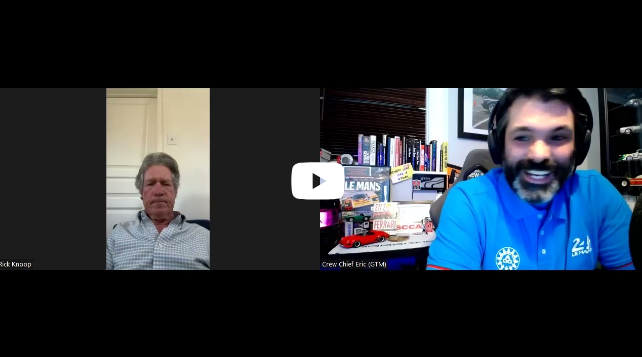
All of our BEHIND THE SCENES (BTS) Break/Fix episodes are raw and unedited, and expressly shared with the permission and consent of our guests.
We hope you enjoyed this presentation and look forward to more Evening With A Legend throughout this season. Sign up for the next EWAL TODAY!
Evening With A Legend (EWAL)
Evening With A Legend is a series of presentations exclusive to Legends of the famous 24 Hours of Le Mans giving us an opportunity to bring a piece of Le Mans to you. By sharing stories and highlights of the big event, you get a chance to become part of the Legend of Le Mans with guests from different eras of over 100 years of racing.
ACO USA
To learn more about or to become a member of the ACO USA, look no further than www.lemans.org, Click on English in the upper right corner and then click on the ACO members tab for Club Offers. Once you become a Member you can follow all the action on the Facebook group ACOUSAMembersClub; and become part of the Legend with future Evening With A Legend meet ups.



